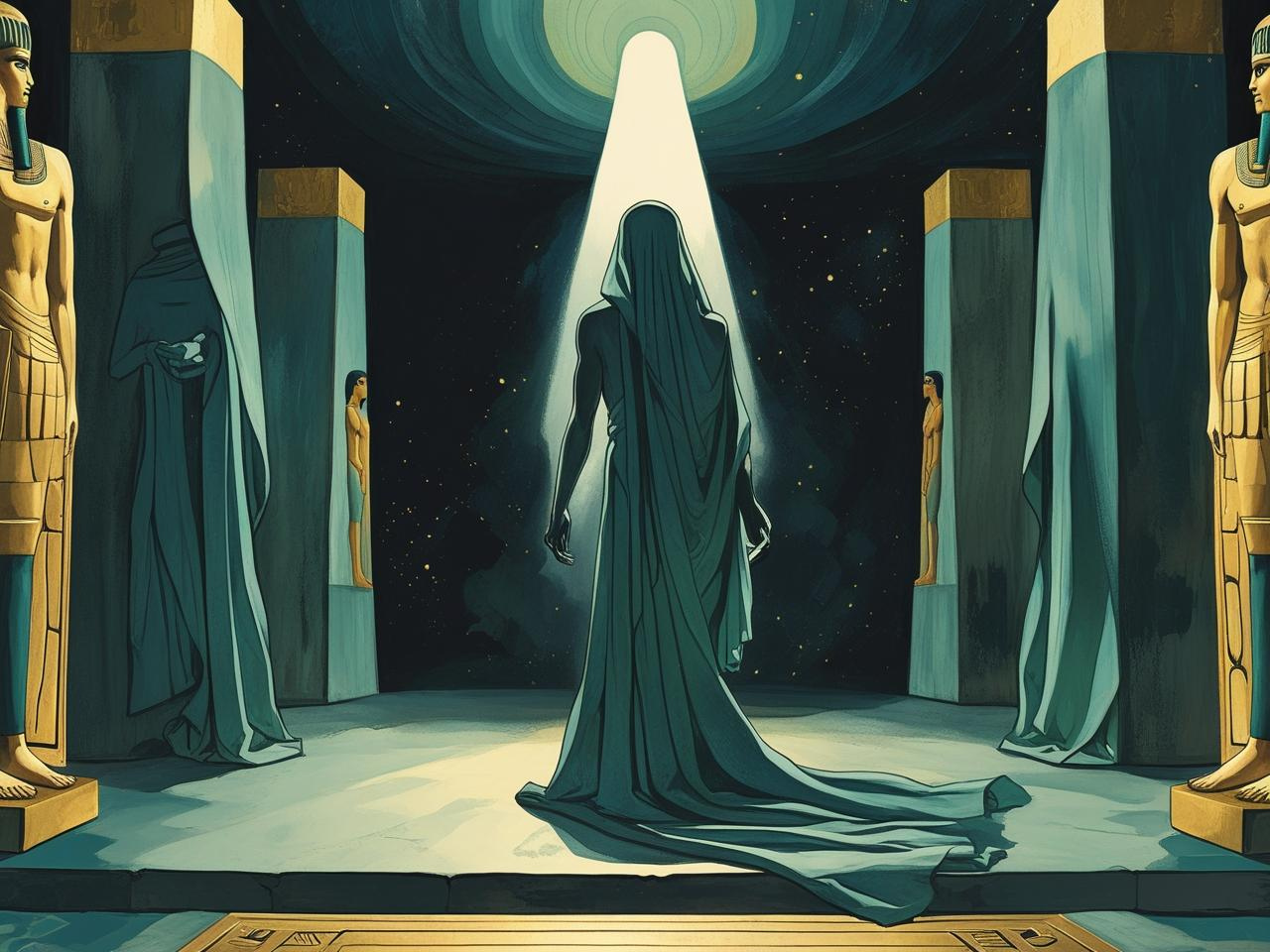In the age of data, speed, and distraction, death has become something to avoid, ignore, or sanitize. We wrap it in euphemisms — “passed away,” “no longer with us,” “gone too soon.” Modern culture tends to treat death like a failure — a glitch in the system of life. But for our ancestors, death was not an end. It was an initiation.
It was a rite of passage, a return, a transformation, a moment of deep significance not just for the dying, but for the entire community. They understood something profound: death is a teacher, and those who confront it consciously are reborn with wisdom.
This is a journey back into that sacred understanding. Let’s explore what death meant to ancient cultures, why we’ve forgotten its true meaning, and how reclaiming this wisdom can radically change how we live.
1. Death Was a Sacred Rite, Not a Tragedy
For the ancients, death was woven into the fabric of life — not something separate, shameful, or hidden away. In tribal cultures across Africa, Asia, South America, and Indigenous North America, death was seen as a transition, not termination.
- The Egyptians preserved the body to honor the soul’s journey.
- Tibetan Buddhists practiced Phowa (conscious dying) and read the Bardo Thödol (Tibetan Book of the Dead) to help the soul navigate death’s thresholds.
- Hindus viewed death as a doorway into rebirth (punarjanma), shaped by karma and dharma.
- Shamans entered trance states to guide souls across the veil.
Death wasn’t feared; it was understood, prepared for, and even welcomed when the time was ripe. It was the ultimate teacher — the final exam before spiritual graduation.
2. Scientific Views: Death as a Biological Threshold
Modern science defines death as the cessation of biological functions: heartbeat, brain activity, breath. But the frontier of consciousness studies is beginning to expand.
Near-Death Experiences (NDEs) are not hallucinations, according to many respected medical professionals and researchers. Dr. Pim van Lommel, a Dutch cardiologist, has documented verified cases where people recalled events, conversations, or sights while clinically dead.
These suggest that consciousness may not be confined to the brain.
Quantum physicist Roger Penrose and anesthesiologist Stuart Hameroff proposed the Orchestrated Objective Reduction (Orch-OR) Theory, suggesting consciousness may arise from quantum processes within neurons — and perhaps survive physical death.
So science, too, may eventually confirm what the ancients knew: death is not the end of awareness.
3. Initiation Rites: Death Before Dying
Many indigenous initiation rites were structured to simulate death — not in a morbid way, but as a deep psychological transformation:
- The initiate would be taken away from the tribe, stripped of identity, comfort, even clothing.
- They might fast, endure symbolic death in a cave or forest.
- Visions, trials, or symbolic “killings” were part of the process.
- Eventually, they would return changed, reborn into a new role: warrior, healer, adult.
Initiation wasn’t just about coming of age — it was a spiritual encounter with death.
Why?
Because when you truly face your mortality, all false identities fall away. What’s left is the core Self, the eternal essence. That is the real birth.
4. The Yogic View: Mrityunjaya — Victory Over Death
In Vedic philosophy, death is not a defeat, but a threshold to immortality.
The Maha Mrityunjaya Mantra, dedicated to Shiva, is chanted to conquer the fear of death:
Tryambakam yajamahe sugandhim pushtivardhanam |
Urvarukamiva bandhanan mrityor mukshiya maamritat.
Translation: We meditate on the three-eyed One, who nourishes all. May He liberate us from the bondage of death, like a cucumber falling from the vine — but not from immortality.
Shiva — the destroyer — is not evil. He represents the dissolution of ego, ignorance, and attachment. The real death in yogic terms is not the end of the body — it’s the end of illusion.
5. Modern Culture’s Amnesia Around Death
So how did we lose this sacred understanding?
- Industrialization removed death from the home and placed it in hospitals.
- Capitalism thrives on youth, productivity, and fear of decay.
- Media sells immortality via anti-aging, surgery, and virtual identity.
- Religion often turned death into a fear tactic (heaven/hell).
We sanitized, outsourced, and avoided death. And in doing so, we lost a vital part of being human.
But this avoidance comes at a price:
- Shallow living
- Fear-driven decisions
- Anxiety over impermanence
6. Reclaiming Death as a Teacher
Imagine if we saw death the way our ancestors did — as a wise elder, not a threat.
- We’d live more intentionally.
- We’d speak more honestly.
- We’d cherish time, not waste it.
- We’d forgive more, resent less.
Many spiritual traditions suggest we meditate on death daily. Not to be gloomy — but to stay awake.
One Zen saying goes: “The problem is, you think you have time.”
If we truly understood death, we’d stop postponing our soul’s work.
My View: Death is a Mirror, Not a Wall
As someone walking both the technological and spiritual path, I’ve come to see death not as an error to be fixed, but a mirror held up to our illusion of permanence.
In AI or digital systems, we fear deletion, loss of data, end of relevance. In spiritual life, we fear ego death, loss of identity, uncertainty.
But what if those are invitations?
- Just as an old file must be deleted to make space
- Just as outdated code must be rewritten
- Just as old skin must shed
- so too must we let parts of ourselves die.
Death is the spiritual debugging process.
Practical Ways to Initiate the Death Rite Consciously
You don’t have to wait until your final breath. Begin now:
- Contemplate impermanence daily — not as fear, but as fuel.
- Ask yourself: If I had 1 year left, what would I stop doing? What would I start?
- Read death stories from different traditions (Sufi, Buddhist, Toltec, etc.)
- Visit a cremation site or cemetery not to grieve, but to listen.
- Keep a death journal — not morbid, but reflective.
- Practice ego death: silence, fasting, digital detox, solitude.
- Create a living will — plan your death as your final message to the world.
Death in Dreams and Symbolism
Carl Jung often said that dreams of death signal transformation. Not literal endings — but ego dissolution, change, and soul growth.
In dream language:
- Death = rebirth
- Grave = buried truth
- Funeral = closure
- Skeleton = essential self
Your unconscious knows death is a metaphor — not just biology.
Scientific Echoes: Entropy, Renewal, and Regeneration
In physics, entropy is the measure of disorder — and all systems tend toward it. But in nature, death is never wasted:
- A dead tree nourishes soil.
- A decaying body feeds new life.
- Old stars collapse into supernovas — birthing new galaxies.
Even at the molecular level, cells die by design (apoptosis) to allow renewal. Without it, cancer grows.
Death is not dysfunction — it’s integral to evolution.
Final Thought: The Initiation Awaits
You were not born to avoid death. You were born to understand it, embrace it, and be transformed by it.
Our ancestors sat with death. They lit lamps, sang mantras, and walked the dying home. They understood:
“To die before you die is the secret of eternal life.” — Eckhart Tolle
Let death initiate you. Let it strip the false. Let it remind you what matters.
Because those who truly learn how to die… finally learn how to live.
By Janak Raikhola exploring the wisdom beyond the veil at jraikhola.com.np

